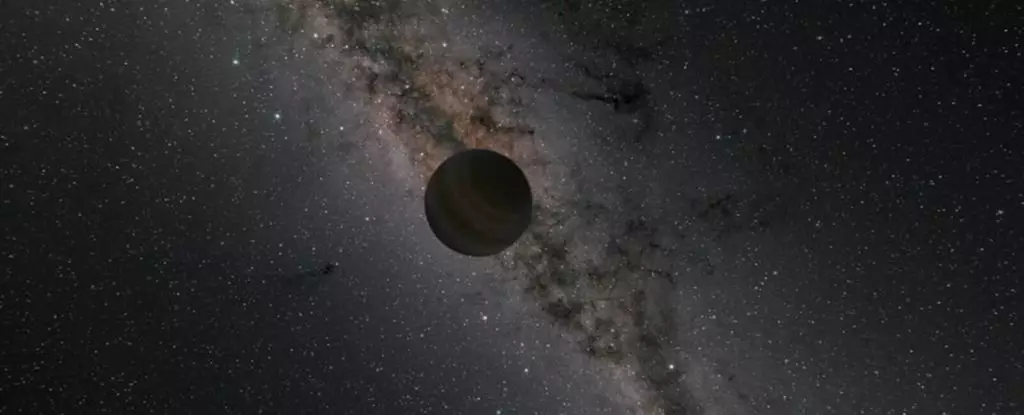The outer Solar System has long been regarded as a mysterious and unexplored region. Situated beyond the orbit of Neptune, this cosmic expanse, known as the Kuiper Belt, is characterized by a plethora of small, icy rocks and dwarf planets such as Pluto, Eris, and Haumea. However, what lies even farther, in the hypothetical Oort Cloud, remains a subject of intense speculation. The Oort Cloud, a vast spherical field of small rocks encircling the entire Solar System, is believed to harbor long-period comets. Yet, beyond these cometary visitors, could there be hidden alien planets lurking in the depths of space? Theoretical astrophysicist Amir Siraj from Princeton University delves into this possibility, shedding light on the potential presence of these enigmatic celestial bodies.
Siraj’s calculations, based on theoretical astrophysics, offer intriguing insights into the existence of alien planets in the outer Solar System. According to his mathematical models, it is conceivable that there may be 1.2 planets with a mass greater than Mars, 2.7 with a mass comparable to Mars, and 5.2 with a mass resembling that of Mercury. While these estimations remain educated guesses, derived from a series of assumptions, the notion of a solitary world stealthily traversing our cosmic neighborhood captures the imagination. The concept of free-floating or rogue planets, initially brought to light in a 2000 publication, plays a pivotal role in this scenario. These planets have disengaged from their parent stars, becoming adrift wanderers throughout the galaxy.
Gravitational interactions often catalyze the separation of a planet from its star, propelling it on a solitary journey through interstellar space. The frequency of such occurrences remains uncertain, but advancements in detection techniques have enabled scientists to refine their estimates. Furthermore, the fate of these nomadic worlds is not always sealed. Passing in close proximity to a star can trigger the gravitational capture of a rogue planet, as exemplified by the celestial “thievery” of Jupiter. Siraj endeavors to understand the likelihood of such an event unfolding within our own Solar System, particularly with regard to the Sun.
To gauge the odds of planetary capture by the Sun, Siraj took into account the estimated number of rogue planets in the Milky Way and the likelihood of stars capturing these vagrant worlds. Utilizing this information, he calculated the probability of a rogue planet passing close enough to the Solar System to be ensnared by the Sun’s gravitational pull. The outcome of his calculations suggests a notable likelihood that an intermediary-sized planet, ranging from the mass of Mercury to that of Earth, could be quietly dwelling in the frigid depths of our outer Solar System. Siraj underscores the significance of further research, emphasizing the necessity of simulating the capture and retention of free-floating planets as well as planets bound to other stars. Additionally, he highlights the exploration of alternative observational tests to confirm the existence of captured planets.
Siraj concludes with a tantalizing prospect – the potential detection of these hidden planets. With the advent of the Vera C. Rubin Observatory, poised to commence scientific operations in 2025, our ability to spot these elusive celestial inhabitants might be within reach. Situated in Chile, this state-of-the-art observatory boasts capabilities that could facilitate the identification of captured planets in the outer Solar System. Assuming a fortuitous configuration in the sky, these solitary interlopers may finally reveal themselves to human scrutiny.
The enigma of the outer Solar System continues to captivate scientists and stargazers alike. Through theoretical models and extrapolations, Amir Siraj’s research provides intriguing insights into the potential presence of hidden alien planets. While uncertainties persist, the prospect of discovering and understanding these celestial nomads holds enormous scientific and philosophical significance. As we peer deeper into the cosmic abyss beyond Neptune, the allure of the unknown beckons, driving our insatiable curiosity to explore the mesmerizing wilderness frontier of the outer Solar System.


Leave a Reply